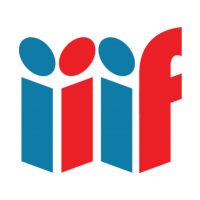大原幽学書状
Ohara Yugaku (1797-1858) was a well-known philosopher and farmer leader in the late Edo period. Starting in 1842, he taught farmers in Nagabe Village, Katori District in Shimousa Province (present-day Asahi City, Chiba Prefecture), integrating Shinto, Confucianism, and Buddhism into a philosophy called “Seigaku” (Studies of Sincerity). He promoted advanced farming techniques, formed ancestral stock cooperatives—considered forerunners to modern cooperatives—and dedicated himself to reviving rural communities.
Chiba University Library holds 10 handwritten letters by Ohara Yugaku, donated by descendants of Dr. Zenjiro Inoue1. ight of these letters are addressed to his close disciple Matazaemon Sugaya, village head of Shotokuji Village in Katori District, and one is jointly addressed to another follower, Denzo Sugizaki of Yonegome Village alongside Matazaemon Sugaya. The last letter is to Komoro Sodo Yuchu, one of Yugaku’s disciples from when he was active in Komoro, Shinshu and other areas). These letters are featured in Ohara Yugaku Zenshu (Collected works of Ohara Yugaku) (1943) edited by the Chiba Prefectural Education Association2.
Public Release of Ohara Yugaku’s Letters
Yuichiro Koseki Professor, Chiba University Faculty of Education (Early Modern Japanese History)
We are pleased to announce the online publication of Ohara Yugaku’s letters preserved in Chiba University Library. Other historical documents held by the library include the Koisho Collection of ancient medical texts, Edo-Meiji horticultural texts, and the Machino Family Documents handed down to the headman of Kotehashi Village (present-day Kotehashi Town, Hanamigawa Ward, Chiba City, Chiba Prefecture), all accessible via the Chiba University Academic Resource Collection (c-arc). Ohara Yugaku has been a prominent figure in the study of early modern Japanese history, and it is highly gratifying that his handwritten letters (10 in total, held by Chiba University Library) are now publicly available online alongside the other collections mentioned above.
As mentioned in the introduction, Ohara Yugaku became widely recognized as a leader in rural reform during the late Edo period, based on his achievements from the Tenpo era (1830–44) onward, centered in Nagabe Village, Katori District, Shimousa Province. Although Yugaku’s activities did not hold national influence at the time, his presence has consistently garnered attention since the modern period. From the Taisho era to the mid-Showa era, the publication of Yugaku Zensho (The Complete Works of Yugaku) by Inajiro Tajiri3, and Ohara Yugaku Zenshu (Collected Works of Ohara Yugaku) (1943) by the Chiba Prefecture Education Association laid the groundwork for understanding Ohara Yugaku. Even after the war, further understanding has been developed through major works, including Teru Takakura’s novel Ohara Yugaku, Nobuhiko Nakai’s Ohara Yugaku and Motoi Kimura’s Ohara Yugaku to Sono Shuhen (Ohara Yugaku and His Surroundings), and in local histories like Asahi-shi Shi (Asahi City History)・Unakami-cho Shi (Unakami Town History).
Meanwhile, inaccuracies have been noted in parts of the source material compiled in Yugaku Zensho and Ohara Yugaku Zenshu, which have served as fundamental references on Yugaku. For this reason, primary sources from the Edo period (such as Ohara Yugaku-related materials) remain essential for an accurate understanding of Yugaku. Many of these materials are housed at the Ohara Yugaku Memorial Museum (Asahi City), and although they represent only a portion of the overall body of related documents, their availability online for easy access is highly significant.
In fact, when comparing the newly published letters with the transcriptions in Ohara Yugaku Zenshu’s "Collection of Letters" and in the Historical Sites and Natural Monuments Survey, Volume 16 (Complete Collection of Letters Related to Ohara Yugaku, Chiba Prefecture, 1939), several characters appear to have been misread during transcription. By making these documents accessible, it is hoped that many interested in Yugaku will further refine and verify the accuracy of the letter contents.
The release of these Ohara Yugaku letters not only facilitates research use but also makes them more accessible for educational and community purposes. Through their online publication on c-arc, we anticipate that Chiba University’s academic resources will make a broad and meaningful impact across various fields.
Eriko InoOhara Yugaku Museum
The Ohara Yugaku Museum was established when materials related to Yugaku were designated as Important Cultural Properties by the Japanese government in 1991.
Out of approximately 30,000 items held at the museum, 407 are designated as Important Cultural Properties, including 54 letters containing a total of 212 correspondences. These letters are valued as a collection that provides insight into Yugaku’s teachings and his interactions with his disciples. The letters held at Chiba University are considered similar in nature, and we are delighted that so many people now have access to these resources on Yugaku.
Additionally, many materials related to Matazaemon Sugaya, a close disciple who was instrumental in supporting the organization of disciples both during and after Yugaku’s life, are preserved at the museum. We hope that the Ohara Yugaku Museum will serve as a valuable resource not only for Yugaku studies but also as a foundation for research on rural life from the late modern period to the modern era.
Related Links
-
Chiba Prefectural Library Nanohana Library Digital Archive – Ohara Yugaku Collection
Digital versions published of documents (47) related to Ohara Yugaku.
-
Zenjiro Inoue (1862-1941)
Graduated from the Faculty of Medicine at Tokyo Imperial University in 1889. He became a professor at the First High School Medical Department (Chiba), the precursor to the university’s Faculty of Medicine, and served as the first Professor of Internal Medicine when it was established as the Chiba Medical School. Inoue was a leading figure in internal medicine and laid the foundation for the university’s Faculty of Medicine. In 1905 (Meiji 38), he published Inoue’s New Internal Medicine in four volumes—the first comprehensive work on internal medicine in Japan (available at the Inohana Branch Library and in the National Diet Library’s Modern Digital Collection). He also founded Inoue Hospital in Chiba City.
-
Ohara Yugaku Zenshu (Collected works of Ohara Yugaku), edited by the Chiba Prefectural Education Association, 1943
Available below for viewing.
-
Yugaku Zensho (The Complete Works of Yugaku) by Ohara Yugaku, edited by Inajiro Tajiri, 1911, Dobunkan
Available below for viewing.
